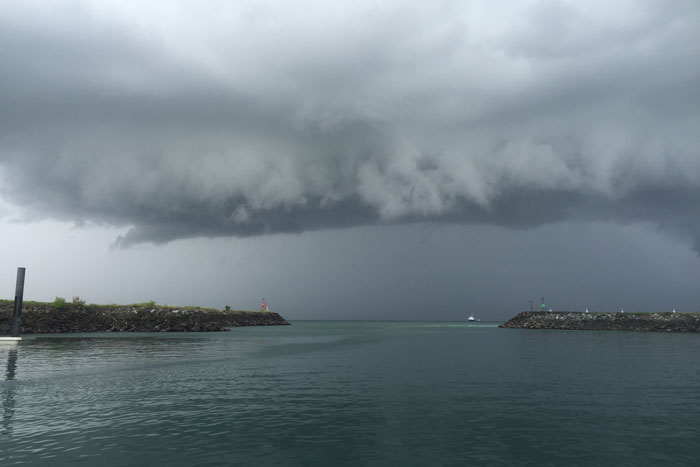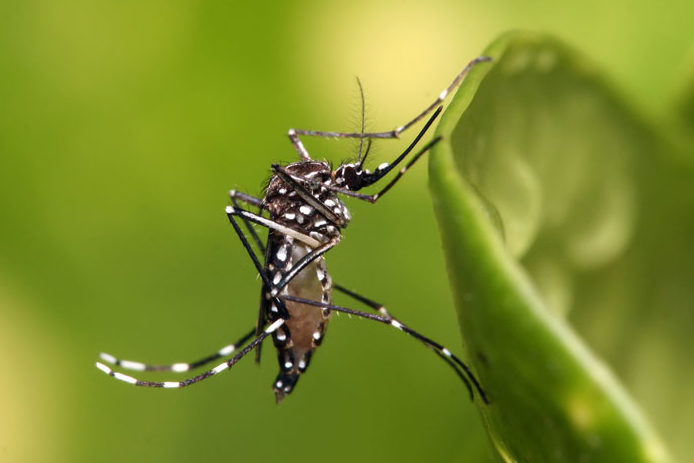PANAMA CITY—I stare at my doctor in disbelief. He’s supposed to provide the best prenatal care in all of Panama. And he’s telling me, at eleven weeks pregnant during my first prenatal appointment, that I don’t need a blood test for the Zika virus.
I’ve traveled here from a remote community in Bocas del Toro, Panama—an outpost for backpackers, surfers, outlaws, and an uneasy mix of Afro-Caribbean and indigenous cultures. By US standards, I’m nearly a month tardy for my first prenatal exam. But getting to decent medical care is time-consuming and expensive, so I hope to combine necessary tests for this trip. I’m at the only hospital in Latin America affiliated with Johns Hopkins University, believing it will be my best shot at keeping this growing baby safe as the threat of disease rises.
“You don’t need to worry about Zika there,” the doctor says, leaning back confidently in his desk chair. “It’s really only in the indigenous communities.”
But Panama is the only country in the Americas with increasing reported cases of Zika. In the rural archipelago where we have lived on Oleada for the past four months, there have been 11 reported cases. That statistic makes me nervous: due to a combination of painfully limited state resources and reputedly poor healthcare, very few people see a doctor in Bocas. The hospital at the edge of town reflects the sorry state of medical care here: it’s crumbling into the unmown grass and trash scattered across the property. The facility is unable to test for Zika in Bocas, so any reported cases must travel elsewhere and self-identify for the test, which costs the equivalent of $150, a flabbergasting amount by local standards. In an area of only 2,000 people densely packed into a single settlement, 11 reported cases likely reflects only a tiny, eerie shadow of a much larger epidemic.
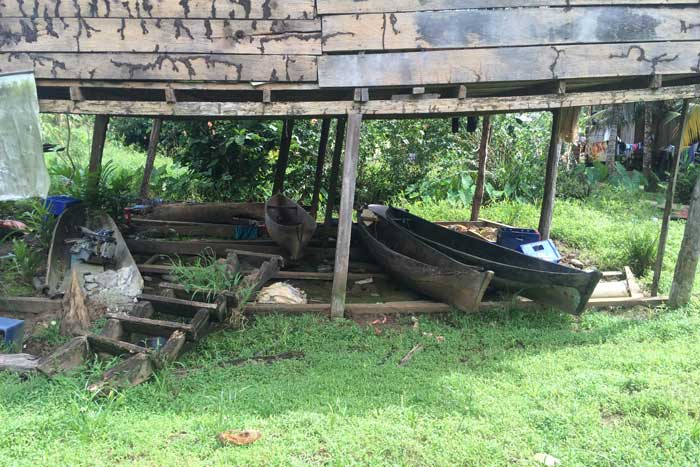
densely packed (and poorly drained) villages perfect for breeding mosquitoes.
The Zika virus generated repeated and consistent international headlines in the last year, moving from the confines of the health pages to front-page global fear status. And for good reason. Carried by Aedes mosquitoes, the virus can cause an alarming condition called microencephaly, in which babies are born with abnormally small heads and the severe developmental disabilities that go along with that.
Earlier, in front of a huge screen in an ultrasound room, Josh and I looked at our five-centimeter-long fetus on the monitor while the doctor instructed the technician to measure the head.
“See? Normal-size head. The baby would not have a normal size head if it had Zika. You do not have Zika.” I felt a wave of relief as I watched the giant screen—immediately followed by a wave of suspicion.
My normal capacity to discern truths from fictions has been severely impeded in the last nine weeks. I’m brimming with 24-hour, unabating nausea. I’m impossibly fatigued, which feels like wearing a lead coat. My head swims as I walk between the small rooms in the office, navigating the narrow doorways, the slightly too-glib doctor and skulking nurses. Everything moves along at the brisk pace of standard procedure. Struggling to override my first trimester symptoms, I force my brain to focus.
I’ve never heard of diagnosing Zika virus with an ultrasound, which strikes me as intrinsically impossible. If I had just contracted the virus last week (which would line up with increased rainfall and therefore breeding mosquitoes in Bocas), the impacts wouldn’t show up on the screen. Although I can’t quite figure it out in the moment, I later realize it feels like a dismissive trick by the doctor to quell an uninformed woman’s concerns.
It turned out he was wrong about the prevalence of the virus in indigenous communities as well—the World Health Organization, using Panama’s Health Ministry statistics, notes the highest percentage of cases (44 percent) reported in metropolitan areas.
Back in the doctor’s office, I sit opposite Dr. Carbone. Floor-to-ceiling windows open onto downtown Panama City’s gray cement skyscrapers. Well-dressed professionals walk briskly on the busy street below while others meander with the kind of leisure possible only for the wealthy.
“What are your questions?” the doctor states with a patronizing assuredness. I give him a list of standard blood and urine tests I want to run, most of which are not typical in Panama. When I tell him both Josh and I would like a Zika test, he sets down his pen.
“Why? Your baby is normal. And they are expensive.” I can feel a tinge of fury begin to burn in my chest.
“I would like the test for both of us,” I say. Despite my pregnancy-induced haze, I’m calm and firm. The doctor writes a separate order, then quickly sends us out of his office with a shrug.
That night, ensconced in the relative safety of an air-conditioned room for the first time since learning I was pregnant, I consider my risks. They’re amorphous at best. I know that Zika exists in Panama, with increasing reported cases. I know that reporting and treatment in rural areas is next to impossible. I know that the US Centers for Disease Control and Prevention advise pregnant women not to travel in any of the regions I have come to call home.
For the first time in months, I have the mental space to do more than just survive on a boat. The enormity finally strikes me: I am completely responsible for the wellbeing of another, entirely defenseless human.
Millions of women face that risk daily, without the option of finding safety in a cooler climate. I have the fortunate privilege of getting away, thanks to my means and US passport. But strangely, I don’t want to leave those women and children who must persevere in this struggle for health. How far does solidarity take me—and an unborn child?
In the quiet calm, I face a decision of moral commitment, compromised goals and uncertain health.
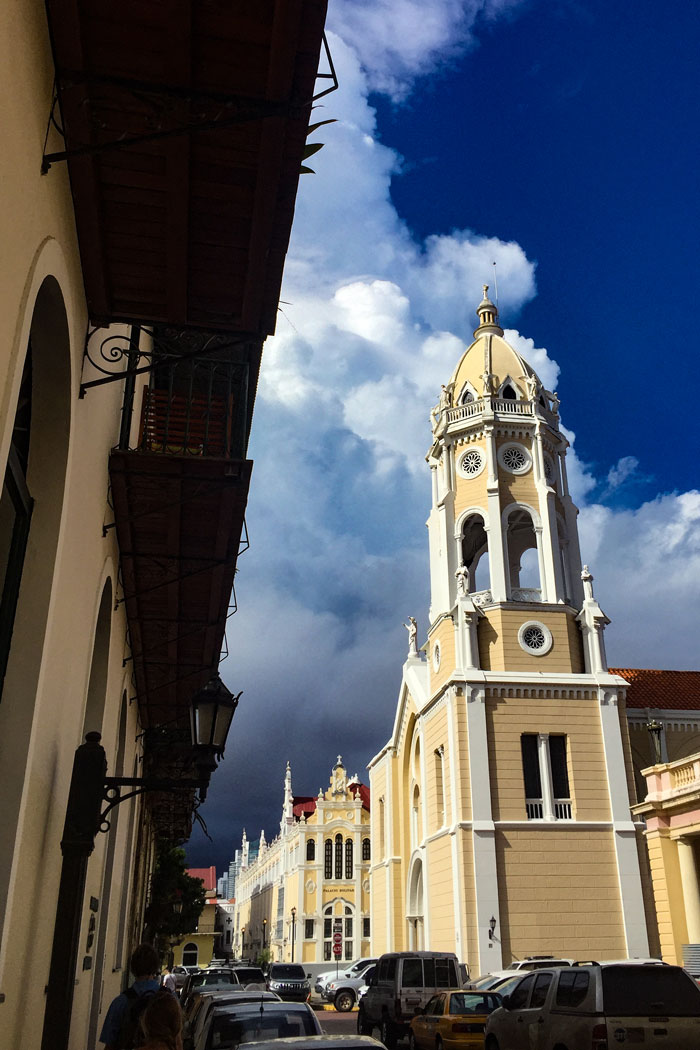
and crowded streets of Bocas. The daily wet season thunderstorm builds over the city.
An iceberg’s tip for Zika symptoms
Zika exposes the most vulnerable humans—pregnant women and unborn babies—to devastating developmental issues. That is one of the factors infectious disease specialists believe influenced a rapid global response to the virus.
I catch one of those specialists, Meghan May, on the phone at the American Society for Microbiology Conference in New Orleans. As associate professor of microbiology and infectious disease at the University of New England College of Medicine, she was among 50 people called to a room in Boston in the spring of 2016 to discuss the threat of the emerging Zika virus. She now spends a significant chunk of time educating physicians about Zika.
From the beginning, May tells me, the response to Zika was unlike anything she had experienced before, from cholera to Ebola. When she attended that first meeting in 2016, sitting in a room with the other disease specialists and physicians, they all were at a loss.
“One of the things I had never seen with an emerging disease before was that there was no expert in the room! But similarly unusual—and cool—was how fast we made progress.” May compares it to AIDS: it took almost 20 years before drugs were mainstream and routinely available. “But in less than a year, I have to completely rewrite my talks because we know so much more [about Zika].”
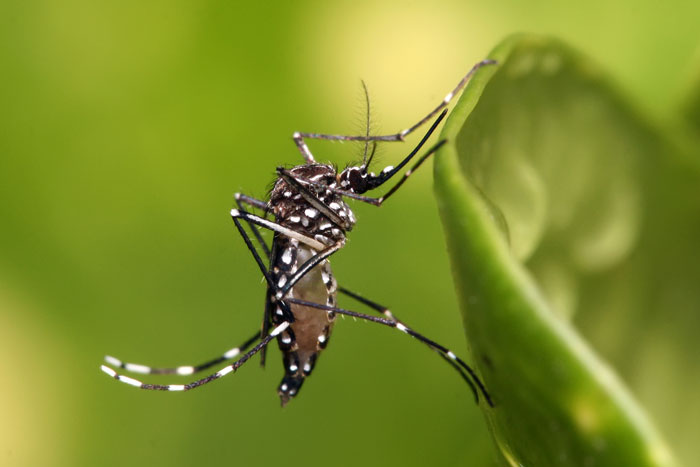
May credits a few factors for the rapid response. First, the vulnerability of babies alarmed not only the general public but also health professionals worldwide. Next, the summoning of many experts out of the blue had the effect of overcoming the normal territoriality that comes with scientific research. Scientists must compete for limited funding and prestige, which can often affect the pace of discovery. But this time, the World Health Organization urged people to post and share data from clinics in real time. Groups set up websites and sequenced genomes, then put them out for anyone to use.
Finally, President Barack Obama made addressing Zika a priority. His administration stated the need for $1.9 billion to start work immediately, and other governments around the globe followed suit. There were resources and sharing.
“It makes me fear for next time this happens,” May says, alluding to the current US leadership.
Despite the alacrity, problems persist. One of those, May points out, aligns directly with my experience: the effects are not dichotomous. Which is to say that it’s not either microencephaly or the baby is fine. In the emerging studies on the effects on babies in utero, CT scans and MRIs show a range of impacts between normal and microencephalic.
When looking at ultrasounds, experts could see most of the infected fetuses had normal-sized head circumferences. But when doctors examined brain scans, they found lesions on the brain. Once those children were born, they were not developmentally normal. That further negates my doctor’s assertion that a normal-sized head means a healthy baby.
“In just the past two weeks, papers and reports from physicians studying kids who were first recognized born from the outbreak have emerged,” May said. “And it becomes apparent how large this problem is and how much infrastructure and care will be needed. It’s a lot more than we thought it was.”
That means parents, their resources and the health care systems are now working with not just overtly disabled children, but many others showing lifelong physical and mental health issues across an alarmingly broad spectrum.
A new vaccine
In my first trimester, I started to hear rumors about a Zika vaccine. Yet when I searched for it online, I found remarkably limited information and no reports of anything publicly available.
Turns out there is a vaccine—but it’s complicated. Developed by Anthony Fauci, director of the National Institute of Allergy and Infectious Diseases, and his research group, the vaccine has been tested and works well in mice and monkeys. Human volunteers are now testing its safety (although not the efficacy—we’ll get to that).
The vaccine has raised more than a few concerns because it’s made with recombinant DNA. Synthetic DNA containing Zika genes is injected into the muscle cells, which take up the DNA and read the Zika gene. The muscle cells then make up a gene product, and the immune system reacts.
It is, in essence, gene therapy, which is still largely experimental after a history of failures and three deaths associated with clinical trials. No current vaccines utilize this synthetic DNA strategy, which is mainly (and effectively) used in experimental cancer treatment.
Cancer patients tend to be more willing to try something risky than otherwise healthy pregnant women.
At a recent conference, May recounted that a physician raised her hand after learning about the vaccine: “My patients are pregnant women. They won’t even drink caffeine or eat a non-organic carrot. So I don’t think they’ll take this vaccine.”
Moreover, the Zika virus acts like most other viruses: it evolves over time. Although scientists don’t yet have a good grasp on the speed of change, they know for certain that synthetic DNA doesn’t change over time. Existing vaccines such as flu shots have a similar problem: they use a current snapshot of potential variants to treat for a particular flu season. But every year, the vaccines must be remade as the virus evolves and each recipient needs to be boosted.
Finally, the vaccine is expensive to manufacture, making it inaccessible to the vast majority of those facing Zika around the globe. Since developing countries present the greatest area of need, the recombinant DNA strategy won’t be able to help most people at risk of infection.
Ultimately, the vaccine developers picked a strategy because it works well in the lab, but never thought through the reality—whether those at risk would have access to the drug, let alone be willing to take it.
“I feel frustrated that this disease is a women’s health issue,” May sighs, her voice strained. “People initially driving the bus never considered how women might look at it.”
Religion, culture, and prenatal care
The divide between male researchers and expecting mothers in the Americas isn’t the only cultural challenge of the Zika battle. In Latin America, we find ourselves unexpectedly bearing the weight of religious practices that pervade both law and culture.
Latin American countries have some of the most restrictive reproductive health policies in the world, especially over abortion. At least 2,000 women die every year from unsafe abortions, in addition to the often life-destroying potential developments, such as incarceration, for women who pursue unsafe abortions or even miscarry in places like El Salvador. (Abortion is criminalized in El Salvador even when necessary to save a woman’s life.)
Since elective termination isn’t even an option, it becomes unimportant to properly diagnose Zika as early as possible. Consequently, testing for genetic abnormalities either happens much later or not at all in most countries.
A friend in Mexico encountered a parallel situation when attempting to receive testing for Downs syndrome. Although the one genetic screening she received is offered to women in the United States at 10 weeks, she had to wait until 16 weeks in Mexico. The first lab she tried to use to process her results refused her, so she had to travel to a second for her diagnosis. After being denied further testing to detect chromosomal abnormalities, she had to visit the United States for a genetic test standard for American women over 37 years, but not available at all in Mexico.
Abortions are illegal in Mexico after 12 weeks, so genetic screening at 16 weeks leaves women with no choices. Ultimately, she found herself in a system where pregnant women are not given the option to learn or elect to terminate: they are expected to commit to a lifetime with a disabled child, regardless of limited public or private resources to do so.
My friend also received incorrect information about Zika: one doctor told her she did not have to worry about the virus after the first trimester despite the fact that it can affect the fetus at any stage of development.
May has witnessed such effects of different cultural versions of Catholicism throughout Latin America. In Brazil, she tells me, screening and elective termination are economic issues. Those who can afford it can terminate—with the blessing of a priest. Those who can’t afford it give birth, often reassured that “it’s all in God’s plan.” Those with the least access to services or ability to pay for medical care and assistance therefore have the highest incidences of debilitating disability in their infants and children.
Ultimately, that forces countries into the terrible situation where the babies with the least social support need it the most.
Disease and climate
That those who are least responsible for global warming bear the brunt of its impacts hits home even harder when it comes to the spread of disease.
“I was having a visceral reaction when Trump gave his speech,” May says, her voice slowing as she recalls the rage she felt as President Donald Trump announced that the United States would pull out of the Paris Climate Agreement. I ask her how much she thinks about climate change in her work.
She answers that she worries not only from a clinical perspective—not just because of the mosquitoes and ticks able to carry diseases into increasingly warmer regions newly exposed to extreme wet weather events—but also the environmental factors themselves that can influence disease.
One of the most prevalent symptoms of climate change is flooding. Floodwaters do not simply inundate an area, then quickly dissipate: they can take months to recede, or permanently alter an area. Aside from creating countless pools for mosquitoes to breed, they often displace residents from their homes, leaving people in temporary shelters, possibly for months and even years. Such conditions are ripe for disease outbreaks. And with flooding in particular, cholera becomes a looming threat.
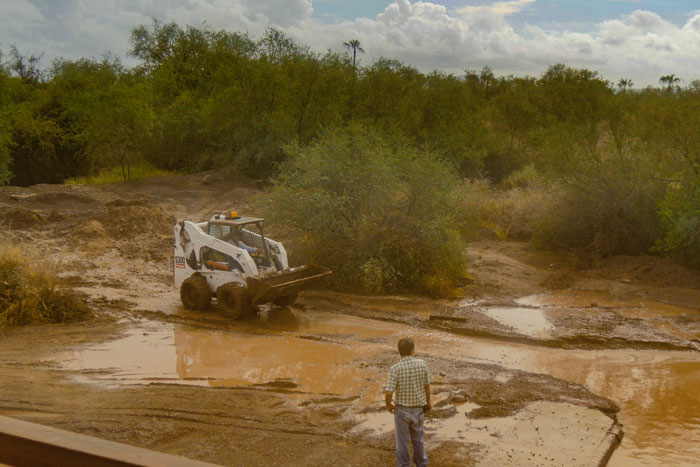
they were not properly engineered and did not function.
It’s a disease specific to poverty. The treatment is normally very simple and inexpensive: rehydration with clean water or IVs. People don’t die of cholera in the United States because the treatment is so simple. But they do in countries without access to medical supplies or clean water. Ultimately, as climate change increasingly affects the poor from rural areas or overcrowded slums, those least responsible for emissions become those most vulnerable—first to displacement, then life-threatening disease.
“It took me a couple of minutes to figure out why I was so enraged,” May tells me quietly, recounting her reaction to the president’s statement that the United States would be leaving the Paris agreement. “By taking no action, by denying it even exists, he creates a situation that would be horrific for so many in the world—but bears NO consequences for the decision.”
“He’s signing death warrants. And it will never be him.”
Surrender
On the sailboat, we are uniquely vulnerable. I can’t retreat to an air-conditioned interior. Despite screens over hatches, mosquitoes manage to slip in. It’s far too hot to sleep in full clothing or even under a sheet. We can’t effectively enclose our already awkward sleeping space.
But I have the unique privilege, held by very few in the world, to keep one developing human being relatively safe from a life-changing disease. Any of my less fortunate compañeras would jump at that chance. They remind me that even if I were to stay and ignore the opportunity to protect a growing baby, it would still be a manifestation of privilege.
Much of pregnancy, I’m learning, is about surrender. I have learned a lot about surrender in the last two years in Mexico and Central America: surrendering to weather, grumpy customs officials, staggeringly inept bureaucracies. But this is the first time I must surrender my closest ally: my body. Nevertheless, I still have the ability to decide what risks I am willing to expose this baby to.
Sitting in the relative calm of our room in Panama City, it’s easier to make decisions in the cooler air, without the bobbing boat aggravating my nausea. My surrender becomes as clear as a still pool reflecting a peaceful certainty. Surrender, once given, creates its own unique sense of freedom, free from the fear of weather or climate or disease.
Back on the boat, we pack only a few things to return to the United States. As we prepare for an uncertain amount of time away, I hear a rumble, then the gentle patter of rain on the cabin top. The winter wet season begins in the tropics.
